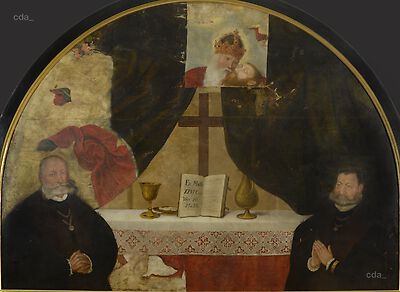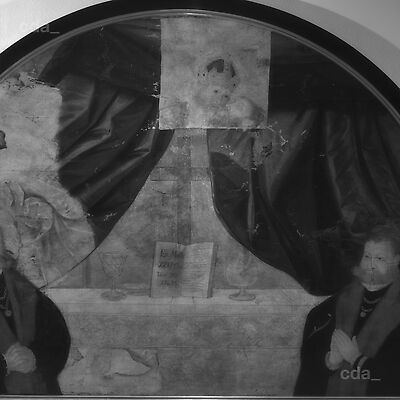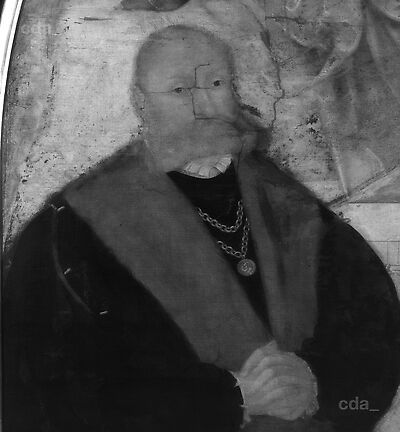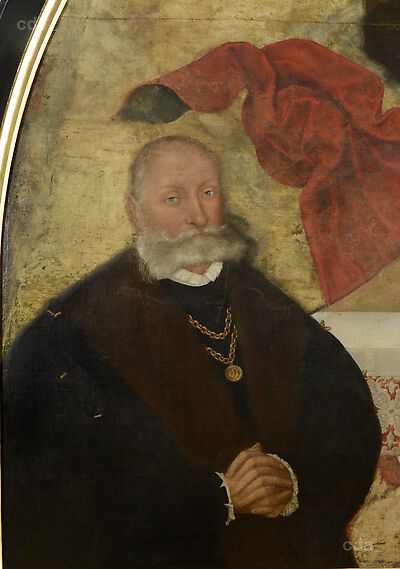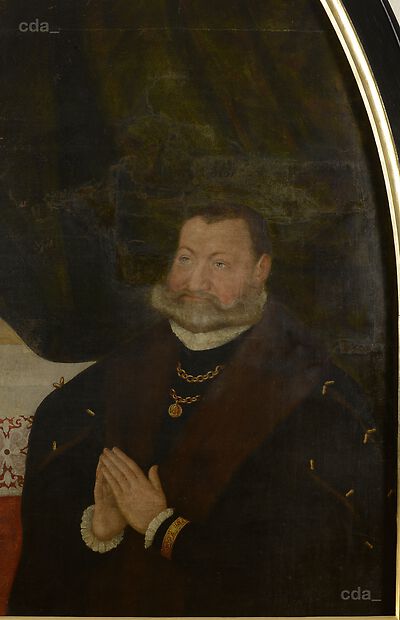The painting - originally rectangular and now exhibits a half-rounded top - depicts the donor praying with his deceased cousin (1561) Joachim facing a church interior. [...] In accordance with Wolfgang's devotional orientation the Trinity is represented as the subject of princely contemplation behind the princes on a different pictorial
The painting - originally rectangular and now exhibits a half-rounded top - depicts the donor praying with his deceased cousin (1561) Joachim facing a church interior. [...] In accordance with Wolfgang's devotional orientation the Trinity is represented as the subject of princely contemplation behind the princes on a different pictorial plane.
[Exhib. Cat. Dessau 2015, No. 68]
- Attribution
- Lucas Cranach the Younger
Attribution
| Lucas Cranach the Younger | [Exhib. Cat. Dessau 2015, No. 68] |
- Production date
- about 1566
Production date
| about 1566 | [Exhib. Cat. Dessau 2015, No. 68] |
- Dimensions
- Dimensions of support: 161 x 223 cm
Dimensions
Dimensions of support: 161 x 223 cm
[Exhib. Cat. Dessau 2015, No. 68]
- Signature / Dating
None
- Inscriptions and Labels
- in the open book on the altarpiece (belonging to the overpaint):
'Ev. Matth.
XXVI Cap.
Vers 26,
27 u. …Inscriptions and Labels
Inscriptions, Badges:
- in the open book on the altarpiece (belonging to the overpaint):
'Ev. Matth.
XXVI Cap.
Vers 26,
27 u. 28'
[cda 2016]
- Owner
- Evangelische Kirchengemeinde St. Bartholomäi, Zerbst
- Repository
- Evangelische Kirchengemeinde St. Bartholomäi, Zerbst
- Location
- Zerbst
- CDA ID
- DE_KBZ_NONE-KBZ002
- FR (1978) Nr.
- FR-none
- Persistent Link
- https://lucascranach.org/en/DE_KBZ_NONE-KBZ002/
- in the open book on the altarpiece (belonging to the overpaint):
